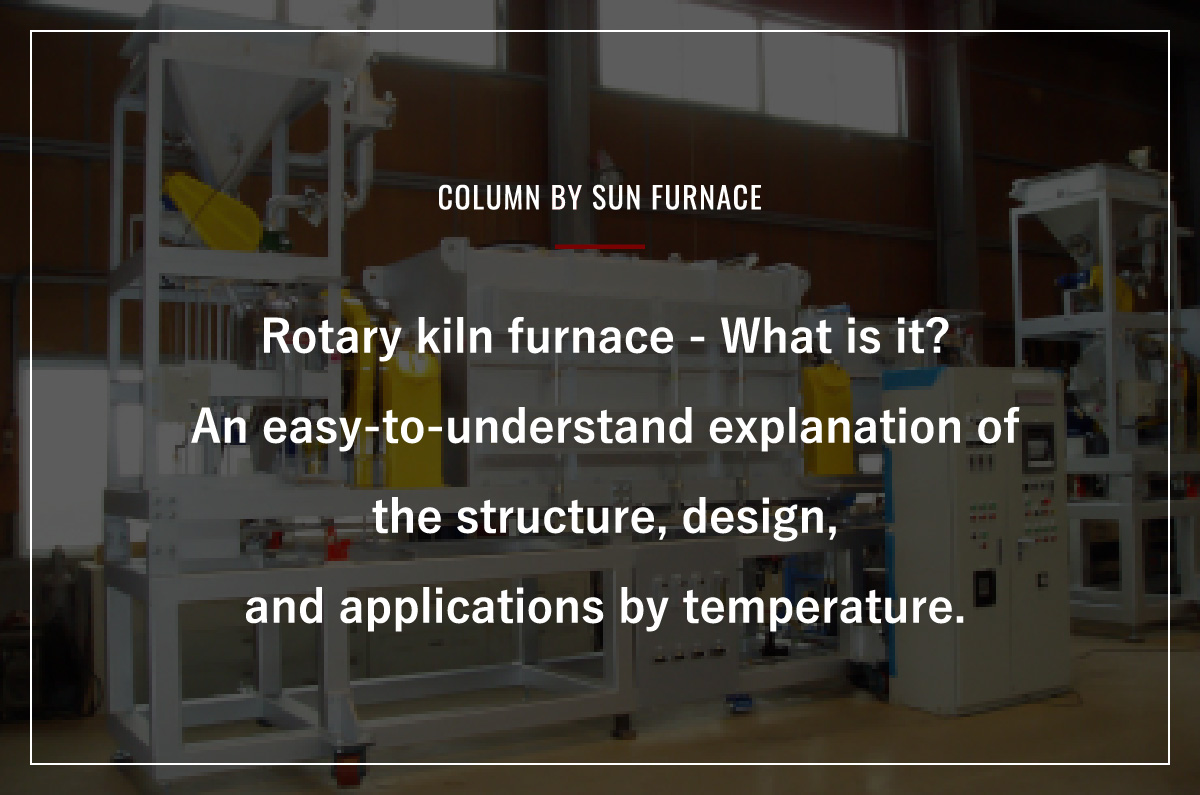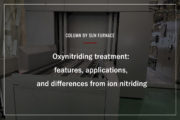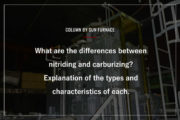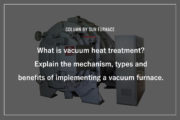We have designed and manufactured over 1500 industrial furnaces, catering to various industries such as automotive, steel, and chemical. With extensive experience and a proven track record in a wide range of furnace types, we offer a diverse range of solutions. In addition to industrial furnaces, we provide total support for related equipment and conveyors, and have successfully tackled a multitude of challenges based on different specifications and needs.
Rotary kiln furnace – What is it? An easy-to-understand explanation of the structure, design, and applications by temperature.

In recent years, with the proliferation of smartphones and electric vehicles, many engineers have faced concerns and questions such as, “Our in-house heat treatment furnace causes uneven firing after processing,” or “I want to introduce a rotary kiln, but I want to know its characteristics.”
A rotary kiln is a heat treatment furnace for powder materials and is widely used in a broad range of industries, including manufacturing of metals such as iron and zinc for the manufacturing industry. Compared to general heat treatment furnaces, it offers advantages such as reduced uneven firing and the possibility of streamlining the manufacturing process.
This article explains the basic structure and features of rotary kilns, their types, and examples of their use in an easy-to-understand manner.”
目次
What is a rotary kiln?
A rotary kiln is a furnace used for calcination or sintering of materials such as metals or ceramics using a unique mixing mechanism and a high-temperature heat source.
The term “kiln” refers to a furnace used for firing pottery or cement, and a rotating kiln is called a rotary kiln.
The rotary kiln is designed with a downward slope from the charging port to the discharge port.
When the rotary kiln is driven by a motor, the powder materials that are inputted into it move gradually from the input port to the output port without the use of a conveyor.
The powder materials are mixed by the rotation of the kiln, and uniform calcination is achieved by burners or heaters.
Continuous rotary kilns can control the hold time in the furnace with high accuracy and enable continuous supply and discharge, unlike stationary thermal treatment furnaces.
Furthermore, it is a versatile device that can create heat treatment conditions suitable for raw materials by controlling temperature, atmosphere, and selecting retort materials.
Differences between rotary kilns and shuttle kilns
The main difference lies in the method of material transport.
In a shuttle kiln, the material is transported on a cart or other conveyance through the kiln for firing, with the kiln body featuring doors for the carts to enter and exit.
On the other hand, a rotary kiln has no doors; the material is fed directly into the kiln through an input port and moves through the kiln to the discharge end via rotation.
To reduce firing time, shuttle kilns use carts made of low-heat-conducting ceramic fiber, but this is not possible in a rotary kiln. The energy required to heat the carts in a shuttle kiln represents a loss that does not occur in a rotary kiln.
| Rotary kiln | Shuttle kiln | |
|---|---|---|
| Material conveying method | Rotation of retort | Movement of dedicated trolley |
| Presence or absence of facility doors | Absent | Present |
| Energy loss | Small | Large |
| Facility space | Large | Small |
| Production capacity | High | Low |
Principles and structure of a rotary kiln furnace
Basic structure and mechanism
In this article, we will discuss the basic structure and mechanism of a continuous rotary kiln.
The main component is a tilted furnace core tube, also known as a retort or a muffle.
Inside the retort, materials such as metals, plastics, wood chips, and sludge are heated while being stirred and flowed.
There are two heating methods: indirect electric heating with heaters outside the retort or direct combustion heating inside the retort using a burner.
Once the materials inside the retort are heated, they are discharged and cooled in a rotary cooler.
The fundamental mechanism of the rotary cooler is similar to that of the rotary kiln, where the materials are indirectly cooled by the cooling medium while being moved inside the rotating furnace core tube.
| Components | Features | Purpose of use |
|---|---|---|
| Retort | Cylindrical container with rotating mechanism and inclination | Stirring and moving the heated material |
| Heating device | Heater or burner | Heating the heated material |
| Atmosphere gas | Gas such as nitrogen, argon, hydrogen | Protection and quality improvement of the heated material |
| Cooling device | Water-cooled or air-cooled, etc. | Cooling the heated material |
The main component of a rotary kiln furnace is the retort, which is a heat-resistant alloy part.
The entire rotary kiln is inclined, and the rotation of the retort causes the rotary kiln to rotate, allowing the raw materials to move automatically.
Heating methods of rotary kilns
Electrically Heated Rotary Kiln
The heat source for this kind of rotating kiln is a heater.
As the processing atmosphere, this kind of rotary kiln uses nitrogen, hydrogen, argon, and other gases.
The use of a heater makes temperature control easier.
Gas-Heated Rotary Kiln
The heat source for this kind of rotating kiln is a gas burner.
Liquid fuels like heavy oil and kerosene or gaseous fuels like city gas and LPG are utilized as the fuel in this type of rotary kiln.
Differences between batch and continuous types
There are two main types of rotary kilns based on the production method
batch-type
In batch-type kilns, materials are loaded and processed one batch at a time, and then the processed material is removed before the next batch is loaded.
continuous-type
Continuous-type kilns maintain a consistently high temperature inside the kiln, allowing for continuous material input and incineration.
Therefore, the material input and output ports are separate.
In heat treatment furnaces, materials are processed while moving at a constant speed from the input to the output using a belt conveyor, etc. However, in a rotary kiln, materials are transported to the output without using a conveying device by rotating the retort.
| Batch type | Continuous type | |
|---|---|---|
| Processing capacity | Suitable for small amounts of various types | Suitable for large amounts of a few types |
| Processing ability | Small | Large |
| Processing time | Suitable for long processing time | Suitable for short processing time |
Examples of applications at different temperatures
The operating temperature of a rotary kiln varies depending on the materials being processed.
Here are some examples of applications at different temperatures:
Applications at 500°C
- Drying sludge: Drying sludge to create fertilizer
- Drying carbon powder: Removing impurities and collecting carbon powder
- Firing resin powder: Heating treatment to add functionality
- Dehydration of dry material powder: Reprocessing to remove residual moisture
Applications at 500-800°C
- Annealing iron powder
Applications at 800-1100°C
- Hydrogen reduction and annealing of metal powder
Please refer to some examples of rotary kiln furnaces
Frequently asked questions about rotary kilns
Finally, let us explain some frequently asked questions about rotary kilns.
Q: Is it possible to test the quality of the heated material in a rotary kiln?
Yes, it is possible with our equipment. We will listen to the details of the test in advance and confirm if our equipment can handle it. Please feel free to contact us.
Q: What are the differences compared to a static furnace?
In a stationary furnace, the exposed surface and the interior of the stacked materials on the cart tend to have uneven temperatures, which can cause uneven heating.
However, in a rotary kiln, the material is stirred uniformly as the retort rotates, so uneven heating does not occur.
Q: Is it possible to process metal materials without nitriding?
Yes, it is possible. By filling the furnace with argon gas, the nitriding of the metal can be prevented. If atmosphere gas is used, a special sealing structure is used to prevent gas leakage.
Summary
In this article, we have explained the features, structure, and types of rotary kiln furnaces, as well as examples of their applications.
Rotary kiln furnaces have the advantage of using a rotating retort driven by a drive unit to uniformly heat powder materials.
Unlike shuttle kilns, there is no need to heat the carriage, which reduces energy loss.
They can be used for both batch and continuous production, and the choice depends on production volume and installation space.
After installing the equipment, it is necessary to determine the required temperature conditions for each material to set the conditions for uniform firing without hot spots.
San Furnace, a rotary kiln manufacturer, can handle products that use 100% hydrogen and can also plan to transition from batch to continuous processing as production volume increases. With expertise and know-how acquired from manufacturing more than 1,500 industrial furnaces, San Furnace can provide custom-made rotary kilns tailored to your needs. Please feel free to contact us for consultation.
Take a closer look at the Rotary Kiln



